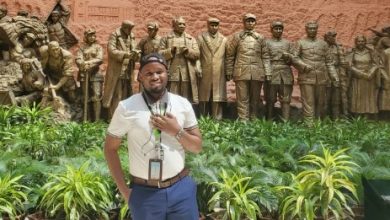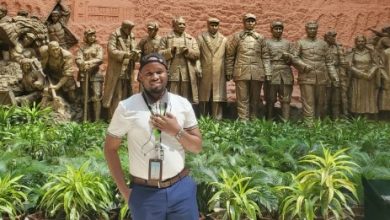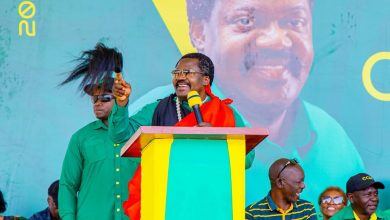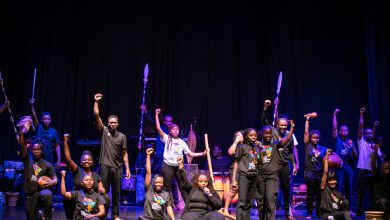Tanzania wins accolades for globally promoting cultural arts

CULTURAL arts encompass the artistic expressions, customs and traditions that are deeply rooted in a specific culture. They serve as a reflection of a society’s values, beliefs and history, and can be expressed through various mediums like music, dance, visual arts, literature and more.
Cultural arts play a vital role in preserving cultural identity, fostering social cohesion, and promoting cross-cultural understanding.
Creative Director and CoChair of the Dance Alps Festival in Austria, Beate Stibig-Nikkanen, has commended Tanzania for maintaining and promoting its cultural arts internationally.
The compliments were given when he held talks with Gerald Mbwafu, the Senior Officer of the Embassy of the United Republic of Tanzania, in Vienna, Austria on August 4, 2025 on the sidelines of the official opening ceremonies of the International Folk Dance Festival held in the City of St. Johann- Tirol, Austria.
Introducing the Festival, Stibig-Nikkanen explained that the international DANCE ALPS FESTIVAL takes place every year between July and August in the town of St Johann-Tirol in the heart of the Kitzbühel Mountains.
The festival includes a variety of dance styles, such as ballet, jazz, modern, contemporary and hip-hop. The festival also offers professional dance classes for children, youth and adults from various countries, conducted by international choreographers, star dancers and dance instructors.
Furthermore, Mbwafu thanked and commended the Secretariat for the Festival’s preparations. He explained that, since the festival’s inception, about 12 years ago, it has been an important platform for promoting and sustaining cultural diplomacy among nations, a tool for sharing opportunities and creating a network for development through culture, and a tool for improving physical and mental health.
He explained that Tanzania values the great power of art— not only as a form of expression, but also as a bridge that connects people across borders. He explained that dance culture is a living language of unity, joy and identity of the traditions and customs of the Tanzanian nation.
Finally, he explained that Tanzania is pleased to be among the participants of the festival for two consecutive years and promises to continue the good cooperation and achieve the participation of more artists in future festivals.
Broad Spectrum of sions: Cultural arts are not limited to a specific set of activities. They encompass a wide array of creative endeavours, including:
Visual Arts: Painting, sculpture, pottery, weaving and other forms of artistic expression using visual elements.
Performing Arts: Music, dance, drama, and storytelling, often involving live performances.
Literary Arts: Poetry, prose, and other forms of written expression that convey cultural narratives and ideas.
Traditional Crafts: Wood carving, beadwork, textile production and other crafts that reflect cultural practices and techniques.
Reflection of Culture: Cultural arts serve as a powerful mirror reflecting a society’s:
Values and Beliefs: Artistic creations often embody the core values, beliefs and spiritual perspectives of a community.
Social Structures: Cultural arts can reflect the social hierarchies, gender roles, and power dynamics within a society.
Historical Experiences: Artistic expressions often document and interpret historical events, migrations and cultural transformations.
Rituals and Customs: Artistic performances, ceremonies and rituals are often integral parts of cultural practices.
Role in Identity Formation: Cultural arts play a crucial role in shaping individual and collective identities. Personal Identity:
Engaging with cultural arts can help individuals understand their place within their community and develop a sense of belonging.
Community Identity: Shared artistic traditions and practices contribute to a sense of collective identity and cultural cohesion.
Intercultural Understanding: Exposure to diverse cultural arts can foster appreciation and understanding of different cultures and perspectives.
Examples in Tanzania: Tanzania boasts a rich tapestry of cultural arts, including:
Mwenge Carvers’ Market: A vibrant market showcasing wood carvings, traditional clothing, and other crafts.
Cultural Arts Centre Zanzibar: A hub for traditional and contemporary arts, including music, dance, and handmade crafts.
Tinga Tinga Painting: A distinctive style of painting originating in Tanzania.
Traditional Music and Dance: Various forms of music and dance are integral to Tanzanian culture.
Zanzibari Doors: Intricate wooden doors that are a hallmark of Zanzibari architecture.
Textiles and Weaving: Traditional textiles and weaving techniques are also important aspects of Tanzanian cultural arts. Jewelry Making and Metalwork: Indian influences have shaped jewelry making and metalwork traditions in Zanzibar.
Tanzania boasts a rich and diverse cultural arts scene, encompassing traditional art forms, music, dance and contemporary expressions. From Makonde carvings and Tingatinga paintings to Maasai beadwork and vibrant Ngoma dances, the country’s artistic heritage is a testament to its cultural diversity.
Traditional Arts
Makonde Carvings: The Makonde people of southern Tanzania are renowned for their intricate ebony or ironwood carvings, often depicting ancestral spirits, animals, and daily life.
Tingatinga Paintings: This distinctive style of painting, characterised by vibrant colours and depictions of animals, village scenes, and daily life, originated in Dar es Salaam and is a popular art form.
Maasai Beadwork: Maasai women are skilled in creating intricate beadwork, using colourful beads to adorn clothing, jewelry and other items, reflecting their cultural identity.
Zanzibar Doors: The elaborately carved wooden doors of Zanzibar are a testament to the island’s Swahili and Omani influences, featuring intricate designs and patterns.
Music and Dance: Ngoma Dance: Ngoma refers to a variety of traditional dances performed by different ethnic groups in Tanzania, often accompanied by drumming and singing, and used for celebrations and ceremonies.
Maasai Jumping Dance: The Maasai are known for their energetic jumping dance, a display of strength and unity performed during ceremonies.
Zaramo Dances: Dances from coastal Tanzania, like the Zaramo dances, feature intricate movements and vibrant costumes, showcasing Swahili influences. Traditional Music: Tanzanian music is a blend of rhythmic percussion, soulful vocals, and melodic instruments, with each ethnic group having its unique musical styles.
ALSO READ: Kabudi sees Tanzanian image in Arts, Culture
Modern Music: Contemporary Tanzanian music includes genres like rap and reggae, as well as mchiriku, a techno-style sound influenced by traditional rhythms.
Cultural institutions, events
National Museum of Tanzania: Located in Dar es Salaam, it houses significant archaeological finds and artifacts related to Tanzanian history and culture.
Cultural Heritage Centre (Arusha): This centre showcases a variety of Tanzanian art forms, including sculptures, paintings, and traditional crafts, offering insights into different ethnic groups.
Cultural Arts Centre (Arusha):
This centre focuses on Tanzanian music and dance, both traditional and contemporary, offering performances, classes, and workshops.
Sauti za Busara Festival: A renowned African music festival held annually in Zanzibar, showcasing a wide range of musical styles.
Mwenge Woodcarvers Market: A market in Dar es Salaam where Makonde carvers and other artisans sell their creations, including Tingatinga paintings and various crafts.
Tanzania’s cultural arts scene is a vibrant reflection of its rich history and diverse population, with both traditional and contemporary expressions contributing to the country’s unique cultural identity.





